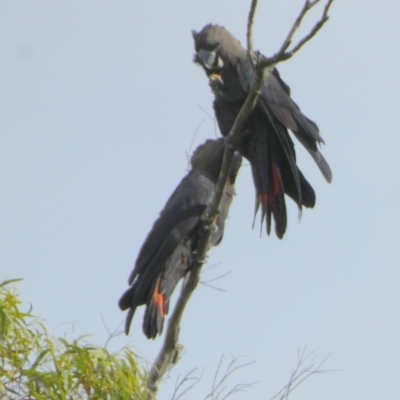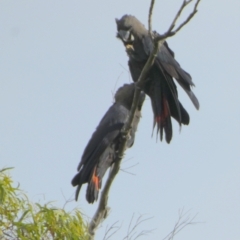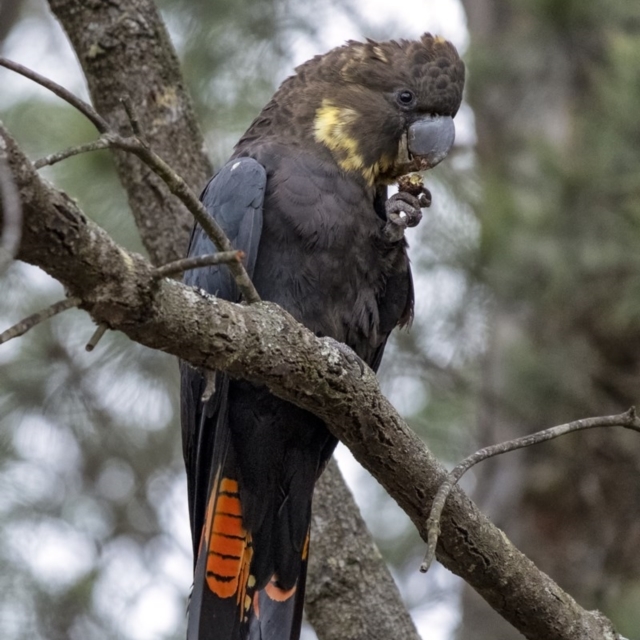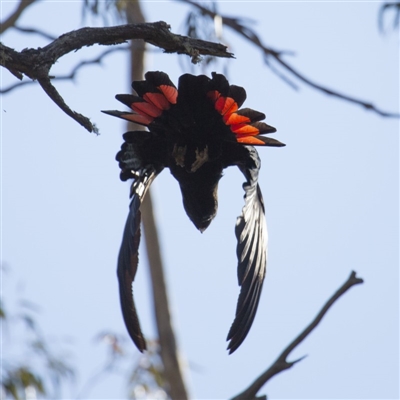Calyptorhynchus lathami lathami (Glossy Black-Cockatoo)
Glossy Black-Cockatoos (Calyptorhynchus lathami) are one of the more threatened species of cockatoo in Australia and are listed as vulnerable in NSW and the ACT, and Vulnerable nationally (EPBC Act).
Canberra Nature Map and Atlas of Life are working with the NSW Office of Environment and Heritage Saving Our Species program in an ongoing Special Project to map the distribution of Glossy Black-Cockatoos, AND to map the location of suitable nest hollows.
Hotspots for observing Glossy Black Cockatoo’s in the local region include Mt Ainslie, Mt Majura, Rob Roy Range Nature Reserve and the Burra area, but in recent years they have been seen in other areas such as Goorooyarroo, Gossan Hill. Pinnacle and Molonglo Gorge nature reserves. We really want a more comprehensive account of where they are.
Some features to look for in recognising Glossy Black-Cockatoos:
PLEASE INCLUDE IMAGES OF FEMALES FACE AND TAIL FEATHERS FOR ID AND AGING OF BIRDS
Where to look for Glossy Black-Cockatoos
Glossy Blacks feed almost exclusively on Allocasuarina fruit (often called 'she-oak cones'), in our area it's occurrence is closely tied to the presence of drooping She-oak (Allocasuarina verticillata) . They feed in trees, never on the ground.
Small groups will sit quietly, chewing on the fruit, sometimes remaining in the same tree for hours. In fact the squeaking and cracking of their feeding is often the first indication of their presence. Such feasting also leaves tell-tale evidence long after they've gone ... the scattering of torn Allocasuarina fruit on the forest floor is quite diagnostic.
What to record & photograph
The location, the number of birds (including sex & age - adult/juvenile - if apparent), and their behaviour at the time. Try to photograph the birds - even an image from a distance may be sufficient to confirm the identification
Recognising feeding sites
Identifying where Glossy Black-Cockatoos feed and nest is potentially even more valuable than sightings of the birds themselves. The tell-tale traces of recent feeding are the scattering of torn Allocasuarina cones. These small 'cones' are exceptionally tough, and if you find them torn apart in this way, you can be confident that Glossies have been feeding in the tree above.
What to record & photograph
Photograph the cones AND the tree, and record this as a sighting on NatureMapr.
Recognising potential nest hollows
We are particularly keen to identify trees which could be nesting sites for Glossy Black-Cockatoos. Protecting suitable nest sites is critical to saving this species.
Glossy Black-Cockatoos nest in tree hollows ... but not just any hollows. Studies in central NSW have shown that Glossy Blacks in the Goonoo State Forest select nesting sites with the following features:
Within the Canberra Nature Map area can you please tick the box "nesting or breeding site" within the sighting record details , if you see a bird entering or inspecting a holow consistent with the above features.
Calyptorhynchus lathami lathami is listed in the following regions:
Canberra & Southern Tablelands | Southern Highlands | South Coast | Greater Sydney | Hunter Region | Central West NSW | Riverina Murray | New South Wales North Coast | Greater Brisbane | Wide Bay
Species information
- Calyptorhynchus lathami lathami Scientific name
- Glossy Black-Cockatoo Common name
- Sensitive
- Vulnerable *
- Non-invasive or negligible
- Up to 867m Recorded at altitude
- 1288 images trained Machine learning
- External link More information













































































































